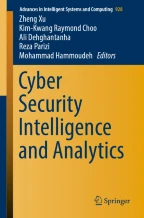Abstract
The design of acquisition parameters is of great significance for intelligent instrument. In order to achieve better application of this method to formation fluid identification and reservoir evaluation, the observed echo amplitude and data kernel matrix are not affected by the diffusion coefficient and relaxation time. The FDTD method uses a set of finite difference equations to replace the Maxwell’s rotation equation, that is, the solution of the differential equations is replaced by the solution of the difference equations. This substitution is meaningful only when the convergence and stability of the discrete differential equations are explained. Compared with the transmission of some broadband information, the use of a specific feature structure can increase the degree of freedom intelligent instrument, and give more detailed description of the echo parameter that can be used. By analyzing the basic principle of intelligent instrument, this paper uses the FDTD method to explain the signal of the instrument, and the simulation results are good.
Access this chapter
Tax calculation will be finalised at checkout
Purchases are for personal use only
Similar content being viewed by others
References
Ahmad K, Hassan F (2016) Radial-basis-function-based nuclear magnetic resonance heavy oil viscosity prediction model for a Kuwait viscous oil field. Interpretation 4(2):81–92
Feng Q, He Z (2015) Development and application of CIFLog-CMR nuclear magnetic resonance data processing and interpretation software. Well Logging Technol 37(5):513–524 (in Chinese)
Baidyk T, Kussul E (2014) Flat image recognition in the process of microdevice assembly. Pattern Recogn Lett 25(1):107–117
Pantazis D, Joshi A (2017) Comparison of landmark-based and automatic methods for cortical surface registration. Neuro Image 49(3):2479–2493
Lindstr MA, Andersson CD (2015) Bone contrast optimization in magnetic resonance imaging using experimental design of ultra-short echo-time parameters. Chemometr Intell Lab Syst 125:33–39
Ongenae F, Looy SV (2016) Time series classification for the prediction of dialysis in critically ill patients using echo state networks. Eng Appl Artif Intell 26(3):984–996
Garcia-Piquer A, Ribas I (2014) Artificial intelligence for the EChO mission planning tool. Exp Astron 40(2):1–24
Coppe A, Haftka RT, Kim NH (2017) Optimization of distribution parameters for estimating probability of crack detection. J Aircr 46(6):2090–2097
Wu HT, Jiao CQ (2017) Transient electromagnetic disturbance induced on the ports of intelligent component of electronic instrument transformer due to switching operations in 500 kV GIS substations. IEEE Access 5(99):5104–5112 (in Chinese)
Chouikhi N, Ammar B (2017) PSO-based analysis of echo state network parameters for time series forecasting. Appl Soft Comput 55:211–225
Author information
Authors and Affiliations
Corresponding author
Editor information
Editors and Affiliations
Rights and permissions
Copyright information
© 2020 Springer Nature Switzerland AG
About this paper
Cite this paper
Song, K. (2020). Optimization of Echo Parameter in Intelligent Instrument Under the Condition of Numerical Stability. In: Xu, Z., Choo, KK., Dehghantanha, A., Parizi, R., Hammoudeh, M. (eds) Cyber Security Intelligence and Analytics. CSIA 2019. Advances in Intelligent Systems and Computing, vol 928. Springer, Cham. https://doi.org/10.1007/978-3-030-15235-2_165
Download citation
DOI: https://doi.org/10.1007/978-3-030-15235-2_165
Published:
Publisher Name: Springer, Cham
Print ISBN: 978-3-030-15234-5
Online ISBN: 978-3-030-15235-2
eBook Packages: Intelligent Technologies and RoboticsIntelligent Technologies and Robotics (R0)


